Candi Borobudur, the largest Buddhist temple in the world, is a UNESCO World Heritage Site and a symbol of Indonesia’s rich cultural heritage. This 9th-century masterpiece captivates visitors with its intricate carvings, grand stupas, and serene surroundings. Whether you’re drawn to its history, spirituality, or architectural beauty, Candi Borobudur is a must-visit destination that offers a glimpse into Indonesia’s glorious past.
To help you have an unforgettable experience, Recago provides this effective Candi Borobudur’s information, ensuring you make the most of your journey!
The fascinating history of Candi Borobudur
Candi Borobudur stands as one of the most impressive architectural feats in Southeast Asia, with a history that dates back to the 9th century. Built during the reign of the Syailendra Dynasty, this massive Buddhist temple complex was originally constructed as a place of pilgrimage and meditation. Over time, however, it was abandoned and slowly faded into obscurity due to volcanic eruptions and political changes in the region.

It wasn’t until the 19th century, when British colonial official Sir Thomas Stamford Raffles rediscovered the site, that Candi Borobudur began to regain its significance. Since then, it has been extensively restored and is now recognized as a UNESCO World Heritage site, drawing visitors from around the world to explore its intricate carvings and the spiritual essence it represents. The history of Candi Borobudur is a testament to Indonesia’s rich cultural and religious legacy, making it an iconic symbol of Buddhist art and architecture.
The stunning architecture and design of Candi Borobudur
The architecture of Candi Borobudur is nothing short of breathtaking, showcasing the brilliance of ancient Javanese civilization. This vast temple complex is an architectural marvel that has captivated visitors for centuries. It is designed as a massive mandala, symbolizing the Buddhist view of the universe, which reflects the path to enlightenment.

The structure of Candi Borobudur
At its core, this place consists of nine stacked platforms. Six of these platforms are square, while three are circular, creating a unique tiered design. This structure represents the Buddhist journey from the physical world to the ultimate state of enlightenment. As visitors ascend the temple, they symbolically move from the earthly realm toward spiritual liberation.
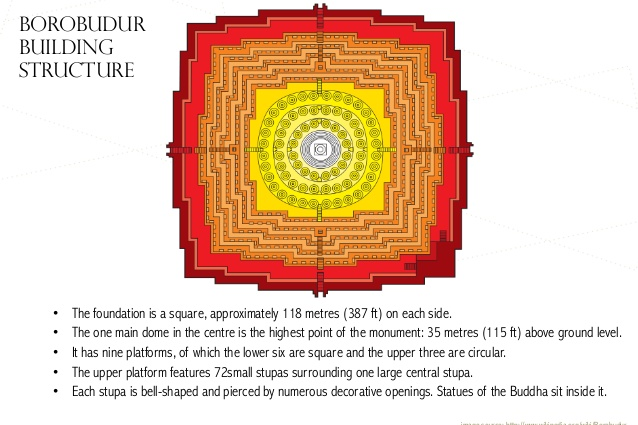
Intricate bas – reliefs and sculptures
Adorning the walls and balustrades of the temple are over 2,600 intricate bas-reliefs, each telling a part of the Buddha’s life story and teachings. These detailed carvings are not only artistic masterpieces but also serve as a form of religious education for those on the pilgrimage route. Every bas-relief is a testament to the exceptional craftsmanship of the artisans who built Candi Borobudur.
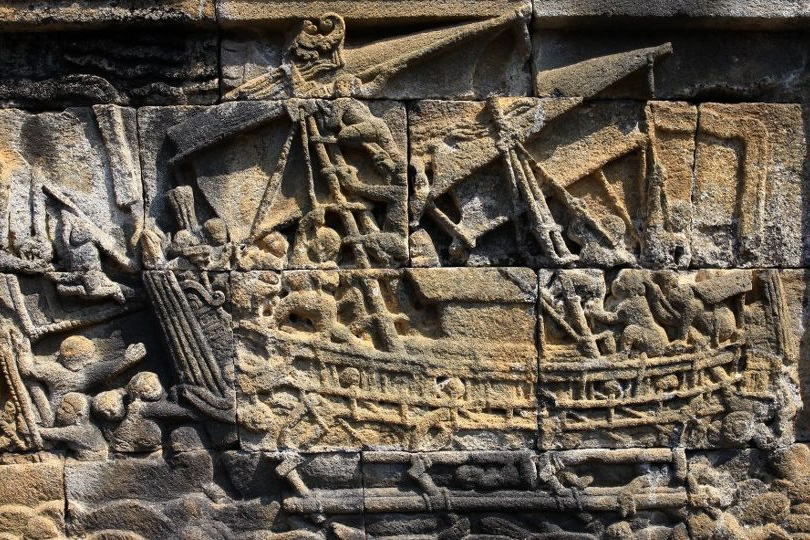
The upper terrace and stupas
At the top of the temple lies a large circular platform, which features a central dome surrounded by 72 smaller stupas. Each stupa contains a statue of the Buddha, which symbolizes the attainment of enlightenment. The design of the uppermost platform is especially significant, representing the culmination of a pilgrim’s journey toward spiritual awakening.

Symbolism and spiritual meaning
The overall design of Candi Borobudur is deeply symbolic. The layout reflects the Buddhist cosmology, guiding visitors on a spiritual journey from the base, which represents the world of desire and suffering, to the top, which symbolizes the ultimate goal of nirvana. The climb up the temple’s terraces is meant to symbolize one’s personal path to enlightenment.
The stunning architecture and design of Candi Borobudur continue to inspire awe and admiration, not only for its grandeur but also for its spiritual significance. It remains a masterpiece of ancient engineering and artistry, blending function, religion, and beauty in a way that few other structures can.
Cultural and spiritual significance of Candi Borobudur
A symbol of Buddhist philosophy
Candi Borobudur holds deep cultural and spiritual significance, serving as a symbol of the Buddhist worldview and philosophy. Built as a massive mandala, the temple represents the journey from the worldly desires of human life to the ultimate state of nirvana. The design itself embodies the teachings of Buddhism, guiding pilgrims on a spiritual path toward enlightenment. Visitors move from the lower terraces, symbolizing the realm of suffering, up to the upper platforms, which represent enlightenment and spiritual liberation.
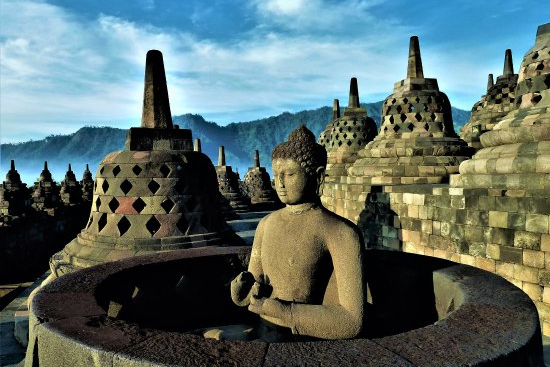
A center for meditation and pilgrimage
Historically, Candi Borobudur was not just an architectural marvel, but a key place of meditation and pilgrimage. Pilgrims would ascend the temple’s terraces, reflecting on the life of the Buddha through the bas-reliefs, contemplating Buddhist teachings at each step. This journey was symbolic, as it mirrored the personal path toward achieving nirvana—free from the cycle of birth, death, and rebirth.
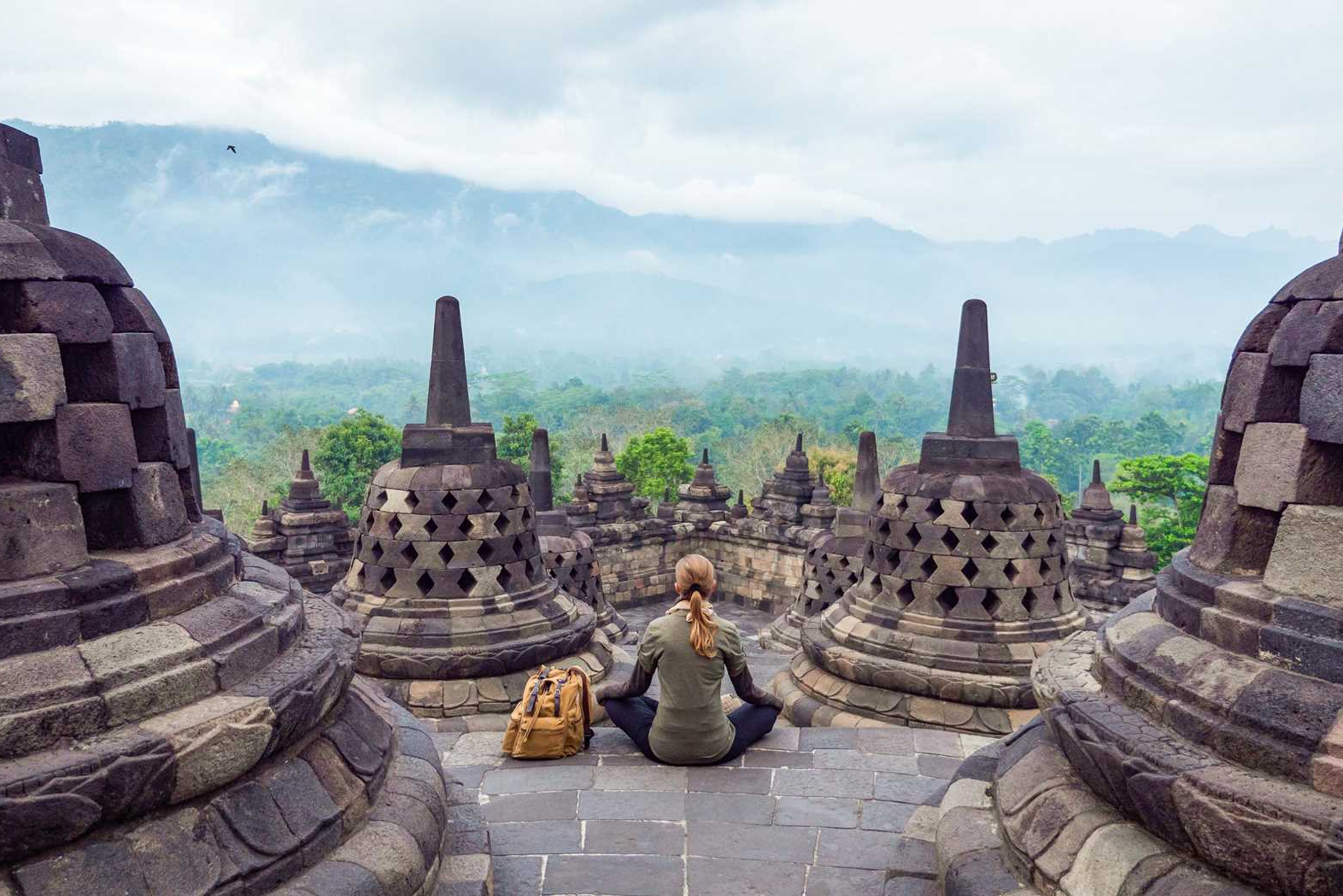
A rich cultural heritage
Beyond its religious significance, Candi Borobudur is a cultural treasure that reflects the artistic and architectural mastery of the 9th-century Javanese. The intricate carvings and sculptures that adorn the temple tell stories of the Buddha’s life, offering insights into the cultural and social life of the time. These carvings are not only religious depictions but also serve as a window into the daily life, traditions, and beliefs of the people who built it.
UNESCO World Heritage Status
In 1991, Candi Borobudur was designated as a UNESCO World Heritage site, underscoring its global cultural and spiritual importance. Its designation highlights its role as a vital piece of human heritage, recognized for its architectural brilliance, religious importance, and profound impact on the understanding of Buddhist traditions.
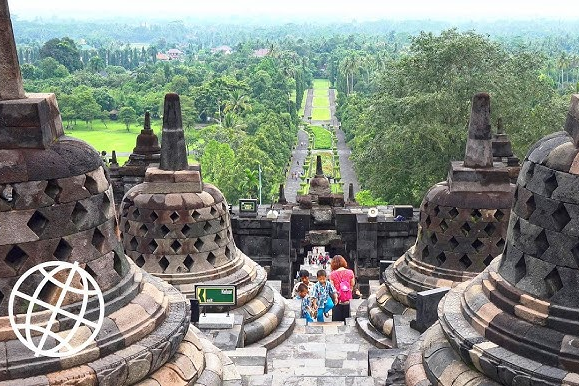
A modern – day spiritual journey
Today, Candi Borobudur continues to be a place of spiritual reflection, attracting both Buddhists and tourists from around the world. Its significance goes beyond its role as a religious monument—it is a living symbol of Indonesia’s diverse cultural and religious heritage. Visitors who come to witness the magnificence of Candi Borobudur often leave with a deeper appreciation of Buddhism, the history of Indonesia, and the timeless quest for enlightenment.

The cultural and spiritual significance of Candi Borobudur is immense, and its legacy continues to inspire awe and reverence. It stands as a reminder of the importance of spirituality, cultural preservation, and the journey toward inner peace.
Plan a visit to Candi Borobudur
Best time to visit
The best time to visit Candi Borobudur is during the dry season, which typically runs from April to October. During this period, the weather is pleasant and ideal for exploring the temple. However, early mornings or late afternoons are recommended to avoid the midday heat, especially since the temple complex is quite large and requires a fair amount of walking.
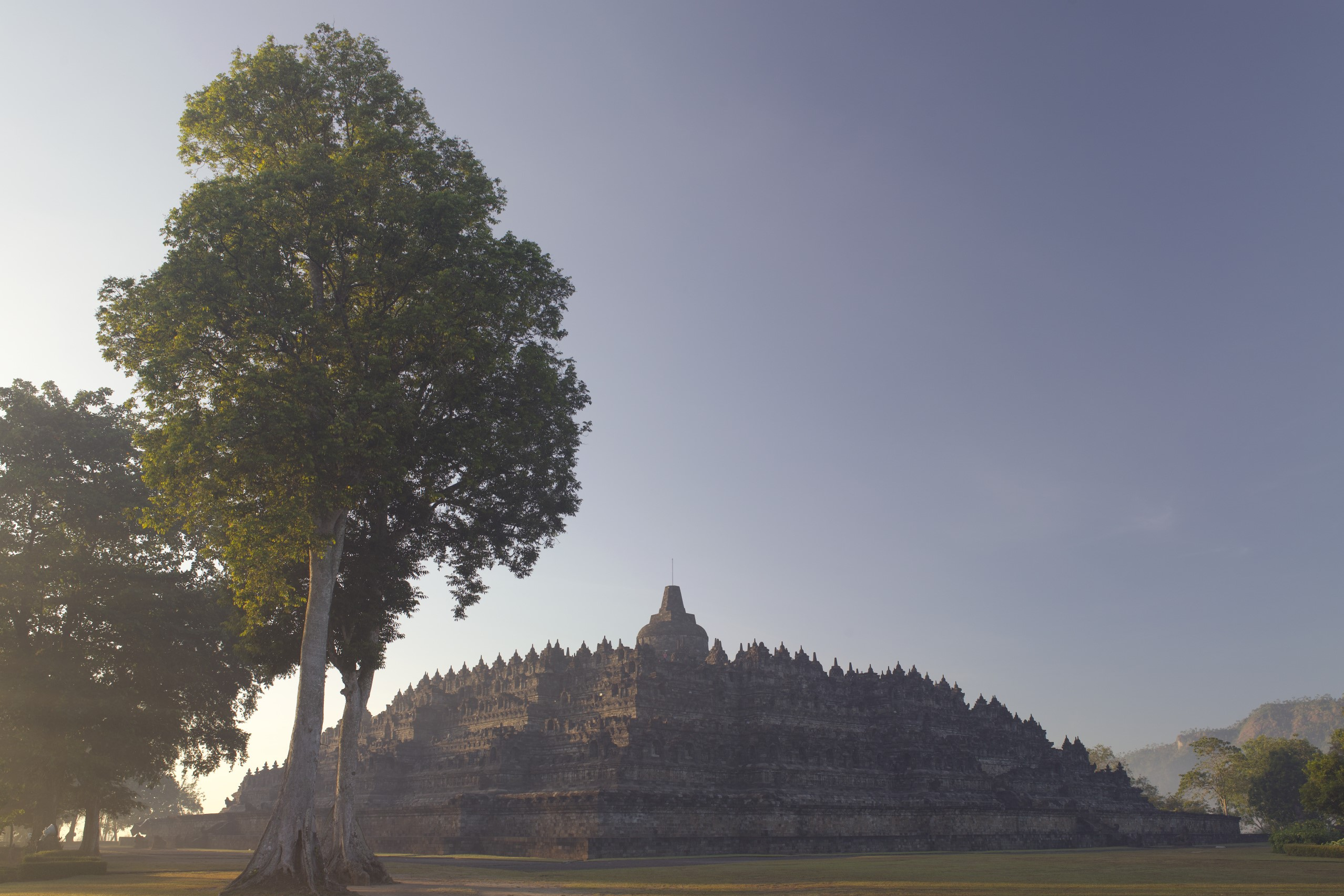
Transportation options
Located in central Java, Candi Borobudur is easily accessible from Yogyakarta, which is about a 1.5-hour drive away. There are several transportation options, including taxis, shuttle buses, and private cars.


For those seeking a more adventurous route, a bike ride or guided tour from Yogyakarta offers a more scenic and immersive experience. Alternatively, you can also choose for a direct flight to Adisucipto International Airport in Yogyakarta and then take a taxi or bus to the temple.
Entrance fees and opening hours
- Candi Borobudur is open daily from 6:00 AM to 5:00 PM.
- The entrance fee varies, but it generally includes access to the temple, as well as a guided tour. For a more exclusive experience, visitors can purchase a sunrise ticket, which grants access to the temple early in the morning, allowing you to witness the stunning sunrise over the Borobudur plateau—a truly magical experience.
- It’s recommended to book tickets in advance, especially during peak tourist seasons.
What to bring
When planning a visit to Candi Borobudur, make sure to bring comfortable walking shoes, as you’ll be climbing several levels to reach the top.
It’s also wise to bring a hat, sunscreen, and water, as it can get quite warm during the day.
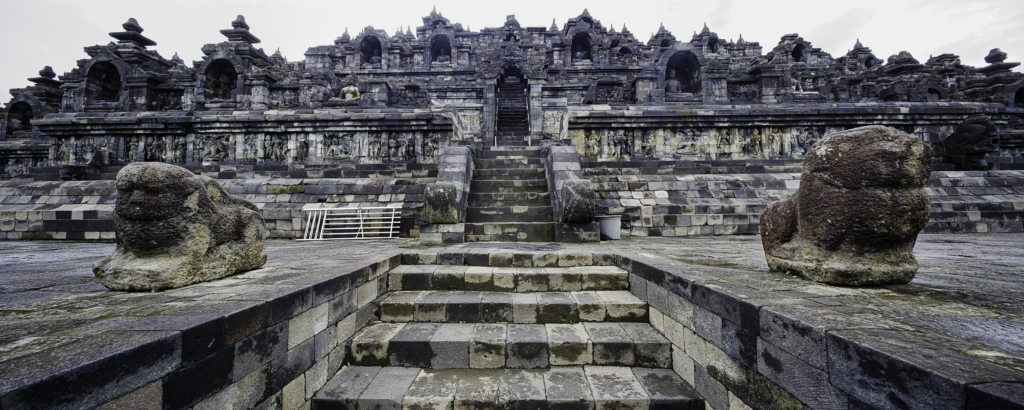
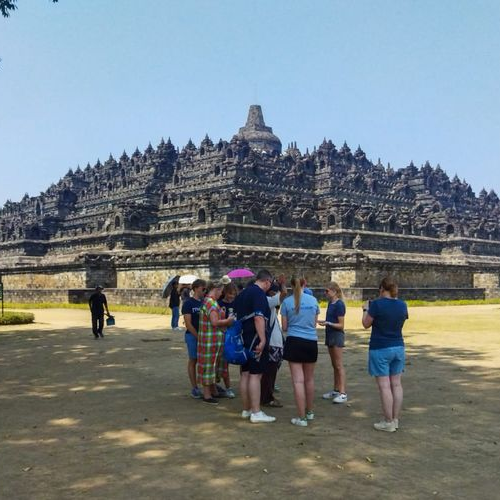
For those interested in photography, a camera with a good zoom lens is essential for capturing the temple’s intricate carvings and panoramic views of the surrounding area.
Tips for a memorable experience
To make the most of your visit to Candi Borobudur, consider hiring a local guide. They can provide insightful explanations about the temple’s history, architecture, and the symbolism behind the carvings. Additionally, participating in a sunrise tour offers a magical experience, as the early morning light casts a golden glow on the temple and the surrounding mist, providing an unforgettable moment.
Conclusion
Candi Borobudur is a stunning symbol of Indonesia’s rich cultural and spiritual heritage. Its intricate carvings, magnificent design, and peaceful surroundings make it a must-visit destination. Whether you explore its history or admire its beauty, a trip to Candi Borobudur is an unforgettable journey into the heart of Indonesia’s past.
Follow Recago for more exciting travel tips!


